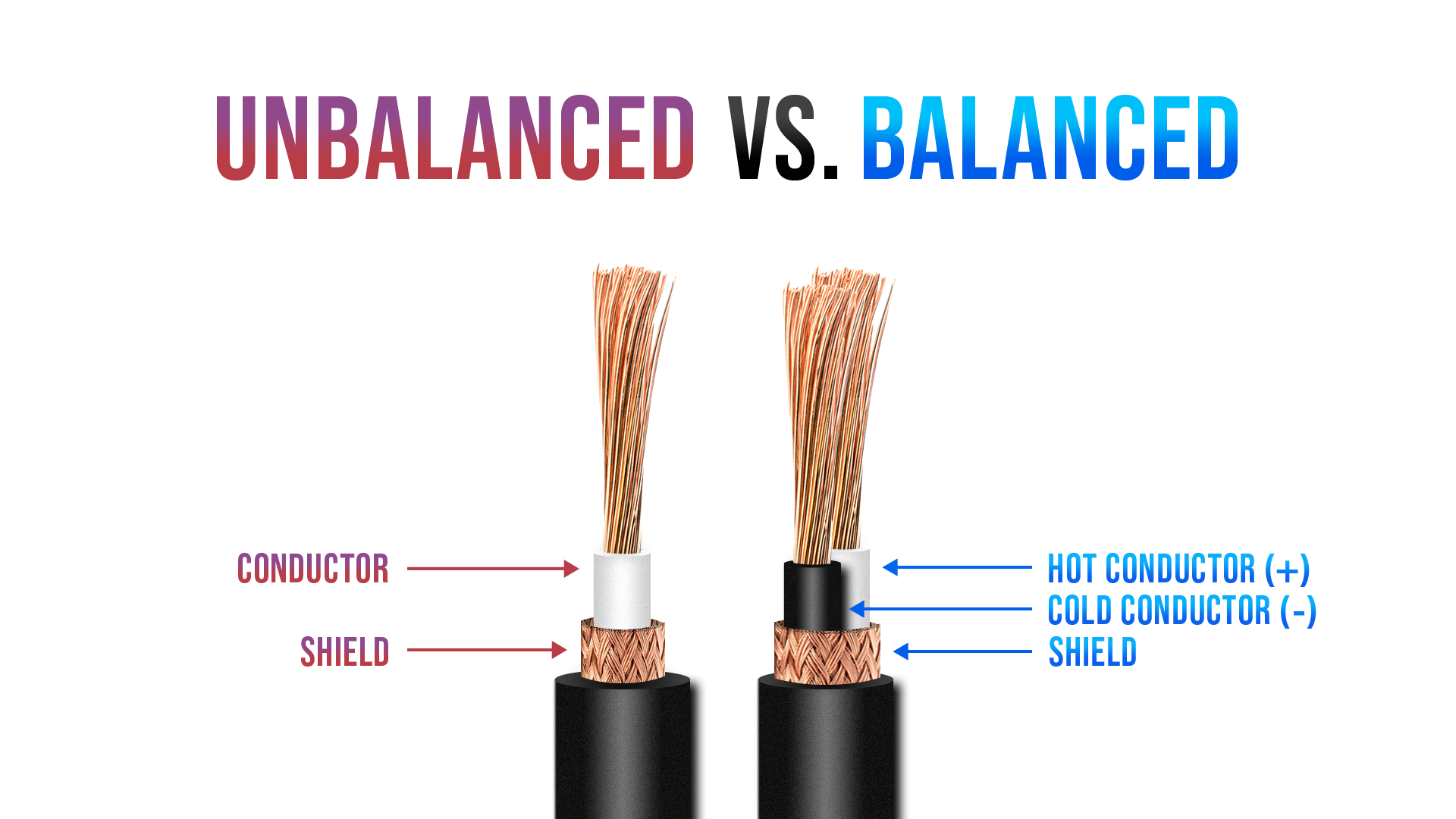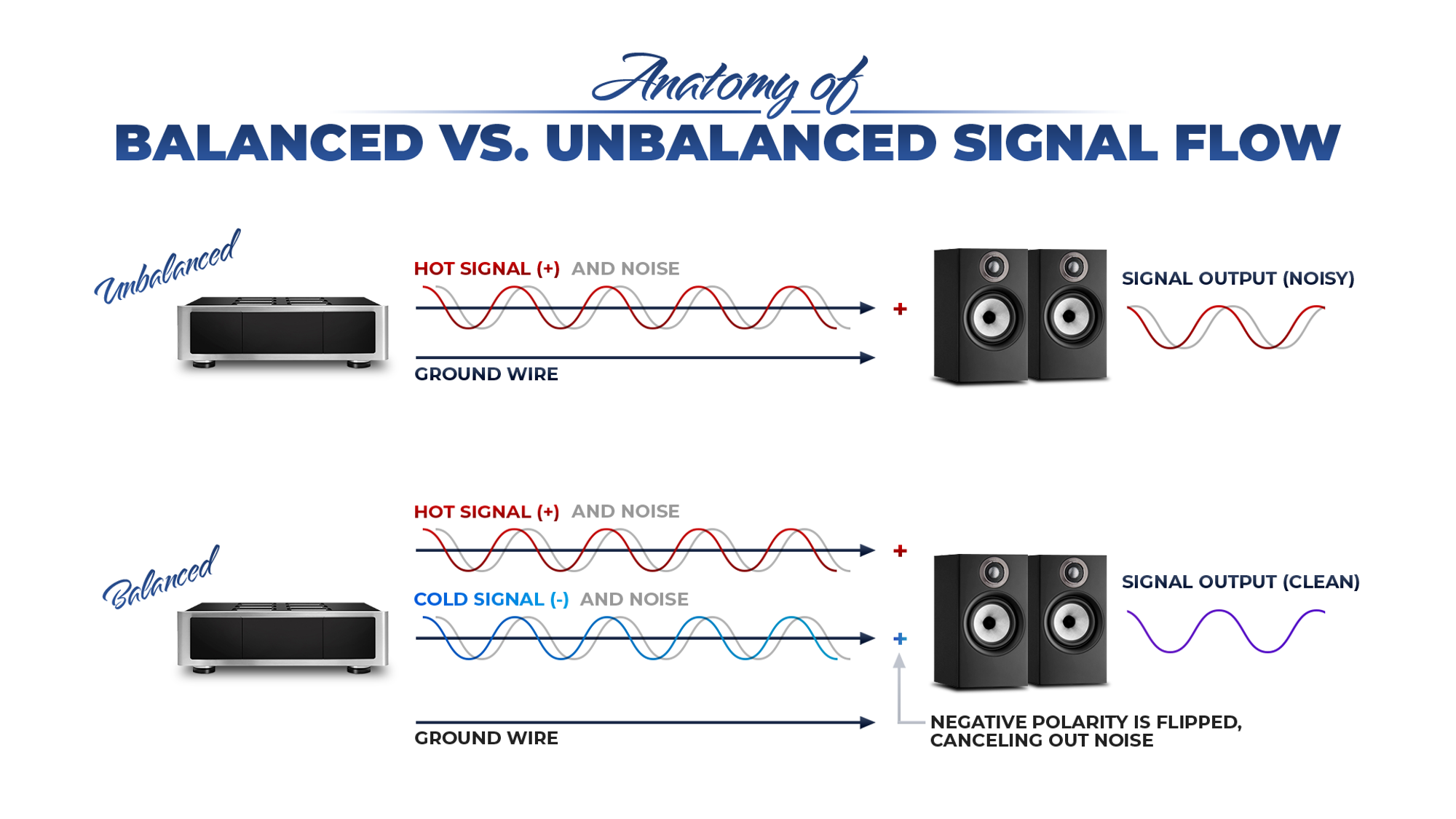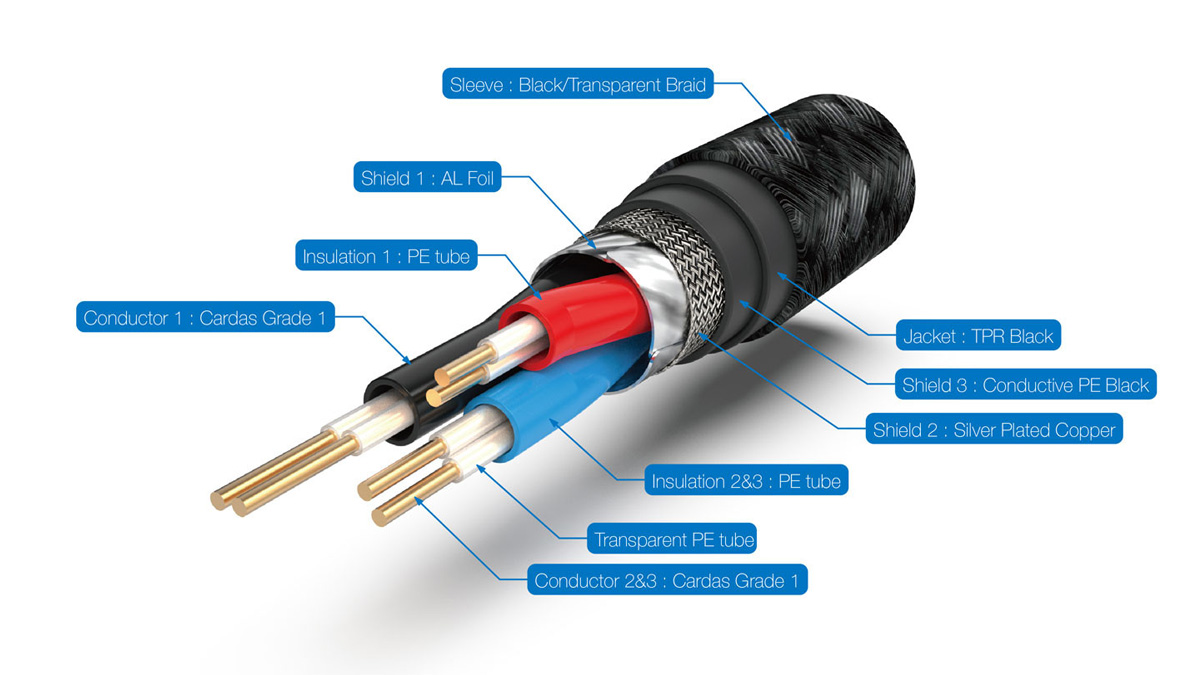Balanced and Unbalanced Cables
Dive into the world of audio cables with our info on balanced vs. unbalanced cables. Discover the key differences that can impact your sound quality, from noise reduction to signal strength. Whether you’re setting up a home studio or simply want to optimize your audio system this can help you make an informed decision for the best audio experience.

Confession: We firmly believe that excellent audio cables are crucial for achieving a high-quality audio playback system. In fact, we'll go so far as to say that we've never encountered a great-sounding audio system – one with a realistic, you-are-there quality – that didn't feature exceptional audio cables. We also believe that audio cables should not act as filters to mask deficiencies in other audio components. Audio cables should remain neutral, allowing the signal to pass without introducing colorations, which are essentially distortions.
There are two primary types of audio signal cables available: balanced and unbalanced. You are likely most familiar with unbalanced cables, which have RCA-type connectors on both ends. Balanced cables feature an XLR-type connector that connects to a male XLR connector on your gear. If your gear lacks male XLR connectors on the rear, you cannot use balanced cables in your system.
A Brief History of Balanced Cables
Balanced cables were developed to address signal transmission issues in professional audio settings, such as studios and arenas, where long cable lengths were required between audio gear. Any long audio cable acts like an antenna, picking up stray RFI (radio frequency interference) and EMI (electromagnetic interference), which then interferes with the audio gear at the end of the line. To combat this serious problem, audio engineers devised a special type of cable with two signal wires for each audio channel. More on this later.
Interference
Balanced and unbalanced cables deal with interference, which occurs when radio and electromagnetic waves from nearby devices disrupt the sound signals in your cables, potentially altering the sound you hear. Balanced and unbalanced cables are designed differently to handle this interference.
Unbalanced
Most regular cables, like those seen on old stereo systems, are unbalanced. Inside these cables, there's one wire for carrying the sound and another for grounding. In unbalanced cables, sound travels in just one path, and they are more susceptible to interference, especially over long distances. It's generally better not to use unbalanced cables for extended distances.
Balanced
Balanced cables have an extra wire compared to unbalanced ones. They include two wires for sound – one carries the typical sound, and the other carries an inverted version of it. When these cables connect to a properly designed circuit in your audio gear, the device compares the two sounds. It eliminates any interference by subtracting the inverted sound from the normal one. This is similar to how noise-canceling headphones work.
For a system to be fully balanced, every part of it needs to be balanced. If even one part isn't balanced, the entire system won't achieve total balance. High-end audio equipment usually incorporates balanced connections, but it's essential to check that every part of your system is compatible.

Should Your System Be Balanced?
There's an ongoing debate about whether balanced systems sound better than unbalanced ones. Balanced systems are more effective at reducing interference, but sometimes interference isn't a significant problem. Remember, you need to use balanced cables for everything in your system for it to be fully balanced.
We suspect that two factors determine how good a balanced system sounds – the quality of the send-receive circuits in your audio gear and the quality of the cables used. Refer to the owner’s manual for your gear. If the manufacturer recommends the use of balanced cables over unbalanced ones, chances are your system will sound best using balanced cables.


